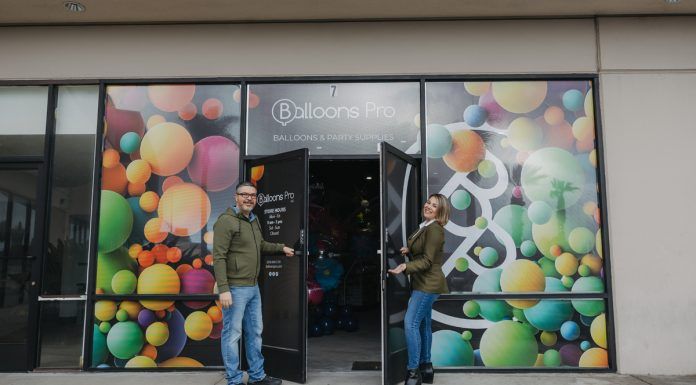The San Diego County Board of Supervisors began the process of developing a more lenient ordinance for the zoning of marijuana cultivation and sales.
A 4-1 vote January 27, with Jim Desmond opposed, directed the development of Zoning Ordinance and Regulatory Code amendments which would repeal the existing ordinance restricting medical and recreational marijuana dispensaries and cultivation, allow the sale of edible and drinkable as well as smokable cannabis products, allow cannabis retail sales in areas with commercial and industrial zoning, allow cannabis cultivation in agriculturally-zoned areas, allow cannabis product manufacturing, distribution, and testing in industrial-zoned areas, allow for a cannabis microbusiness license in areas with agricultural, commercial, or industrial zoning, create a “social equity” program which gives individuals with past cannabis arrests and those in “disproportionately impacted areas” greater opportunities to secure an operating permit, allow for on-site consumption of cannabis products at specified cannabis facilities and permitted events, reduce the separation requirements for a dispensary, require a “labor peace agreement” with a labor union for every tenth employee at a cannabis facility, seek grant funding to implement the social equity program, and exclude cannabis from the medical pre-screening process for county employees. The motion also appropriated $485,000 to cover county staff time and consultant services to develop the ordinance and $500,000 for law enforcement and code enforcement. One of the consultants will advise the county on cannabis tax options. The supervisors directed that county staff report back to the board within 90 days with an update including any regulatory changes which could be implemented during that time and return to the board with a draft ordinance and policies within 180 days.
“It is appropriate today we revisit our county’s approach to cannabis policy,” said Supervisor Nathan Fletcher. “Today’s action would put us on a path moving in a different direction.”
In November 1996 the state’s voters passed Proposition 215, which allows the cultivation, possession and use of marijuana for medicinal purposes. While Proposition 215 did not address the sale of medical marijuana, in 2003 the state legislature adopted Senate Bill 420, which prohibits prosecution of sales to persons with a prescription.
By 2009 three medical marijuana dispensaries in unincorporated San Diego County were confirmed. In August 2009 the Board of Supervisors adopted an urgency ordinance which enacted a moratorium on all marijuana dispensaries until zoning regulations could be developed.
The ordinance adopted by the county supervisors in June 2010 was based in part on the county’s adult entertainment ordinance restrictions. In 2001 an administrative permit was granted for a topless dancing facility in unincorporated El Cajon across from a shopping center which included a children’s dance studio, an arcade, and a pizza parlor. In 2002 the county removed commercial zoning areas from potential adult entertainment sites and limited future establishments to land with industrial M50, M52, M54, and M58 zoning. The medical marijuana zoning ordinance restricted dispensaries to land with that same industrial zoning. (The county’s C46 Medical Center zoning category intended to create a concentration of medical and compatible uses requires a site plan for all development, and the allowance for medical-related facilities in C46 zones is not absolute as ambulance services are only allowed with a Major Use Permit.) The restriction to industrial-zoned areas also made cannabis cultivation facilities more compatible with surrounding businesses as commercial buildings may not be suitable for the heavy electrical, air venting and circulation, fertilizing, and water usage requirements for the cultivation process.
The 2010 ordinance also required separation of at least 1,000 feet from another dispensary, a church, a school, a public park, or a residential area. The county identified 187 potential properties for a dispensary, although the 1,000-foot separation requirement was expected to reduce that amount to between 15 and 25. The dispensary ordinance also required that no portion of the area where the marijuana is being cultivated or stored be visible from the exterior while requiring the entrance to the facility to be visible from the public street. Due to free speech issues the county cannot regulate the content of signage, although signage as well as parking requirements for dispensaries must conform to regulations for other businesses with similar zoning. Dispensaries do not require discretionary permits but must have building permits, licenses, and other ministerial approvals.
Three separate building permits for dispensaries in Ramona caused Ramona citizens to seek remediation about the concentration of dispensaries, an application for a Valley Center dispensary was more than 1,000 feet from residentially-zoned land but within 1,000 feet of agriculturally-zoned land which allows for a residence, and an application for a Julian dispensary was on land which had been rezoned from agricultural to industrial but which grandfathered residential use. The San Diego County Trade Association of Medical Marijuana Collectives and the Ramona Community Planning Group worked on a memorandum of understanding the planning group approved on a 10-2 vote in November 2016. The county’s Planning Commission met the following day and used the MOU as the basis for its recommendation, which passed on a 6-0 vote with one absent commissioner, to limit dispensaries to four in any supervisorial district and two in any community, to increase the minimum purchase age from 18 to 21, to limit operating hours from 10:00 a.m. to 8:00 p.m., to require security cameras and security guards, to increase the fines for repeat violators, and to require a Minor Use Permit which requires public review and environmental documentation and can be approved by the county’s Zoning Administrator.
The election four days after that Planning Commission meeting included the passage of Proposition 64 which legalized recreational marijuana in California and Kristin Gaspar defeating incumbent Dave Roberts for a Board of Supervisors seat. In January 2017 the proposed amended medical marijuana ordinance went before the Board of Supervisors. The 2010 zoning preceded a state court decision that local governments could ban dispensaries completely, and a 3-2 vote approved a complete ban on medical and recreational marijuana dispensaries as well as cultivation-only facilities. The two existing legal dispensaries and the four planned dispensaries which had been granted building permits were given a five-year amortization period and have until April 2022 to cease operation.
“This contributes to significant numbers of unlicensed operators,” Fletcher said.
“We have not established a good reliable system,” Fletcher said. “We want to clean this up and have a good system in place.”
The ban does not eliminate non-profit collectives or cultivation for personal (including caregiver patient) use. The ban applies only to unincorporated areas and not to incorporated cities.
“It is allowed in California. The voters have spoken clearly and repeatedly,” Fletcher said.
(Proposition 64 was the third ballot measure to legalize recreational marijuana in California but the first to pass; both the November 1972 and November 2020 failed measures were called Proposition 19.)
Ballot measures to approve, regulate, and tax cannabis have been approved in seven of San Diego County’s 18 incorporated cities: Chula Vista, Encinitas, La Mesa, Lemon Grove, Oceanside, San Diego, and Vista. “It gave us tremendous opportunities to learn from jurisdictions who are ahead of us,” Fletcher said.
Fletcher said that social equity would be an advantage of allowing dispensaries and cultivation in the unincorporated county. “We know that many communities have been disproportionately impacted and disadvantaged by the War on Drugs,” he said. “We want to make sure we’re giving opportunities to communities that have been disproportionately impacted.”














